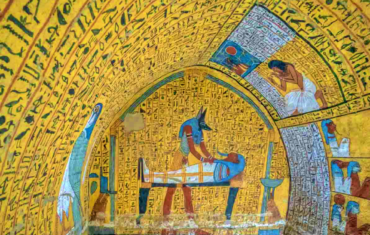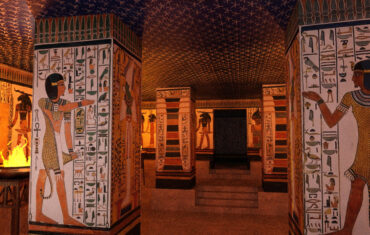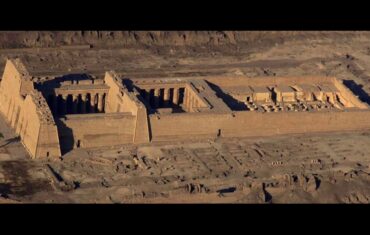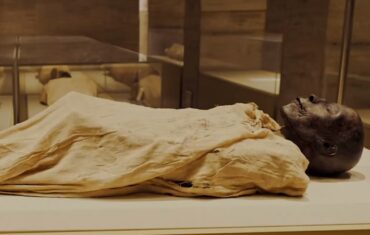History of Luxor Temple
The Luxor temple was the second most important temple in Egypt. Today it is one of the most famous and visited historical monuments of the country. Since 1979, the temple has been a UNESCO world heritage site.
The history of the Temple

According to the age of the temple in Luxor is inferior to Karnak. The beginning of the construction of the Luxor sanctuary is associated with the name of Amenhotep III (ruled in 1388-1351 BC). This was the time of the great economic and political flourishing of ancient Egyptian civilization. Amenhotep III built the temple on an unprecedented scale. magnificent sculptures, wonderful jewelry and many other works of art remain from his reign, which now make up the pride of the best museums in the world.

Temple of Amun-RA-the name is conditional. It was a place of worship for the Theban “Trinity” – Amun, his daughter and wife Mut, Queen of the heavens and patroness of motherhood, and their son Khonsu, God of the moon, a celestial healer.
The works were supervised by the famous Egyptian architect Amenhotep. Coming from a simple family, Amenhotep was able to become a Royal scribe and Manager of all the Royal works, that is, one of the first dignitaries of the state. At court, Amenhotep enjoyed unquestionable authority, and after his death, on the orders of the Pharaoh, he was deified. Statues depicting Amenhotep have been preserved, and several of them have been found in Karnak. Also known are the names of the masters who participated in the construction — the twin brothers Gori and Suti.
Under Amenhotep III, the main part of the temple was rebuilt – the Central building, the colonnade leading to the main entrance, and a spacious peristyle (a courtyard framed by columns).

During the reign of Ramses II, the temple was significantly expanded. Another peristyle measuring 45 by 51 meters was added to it, and a pylon was erected. Six sculptures of Ramses and two obelisks were installed in front of the entrance.
The construction of the Luxor temple and the construction Of the Avenue of sphinxes, which stretched to Karnak, gave completeness and symmetry to the Theban temple complex, uniting both temples in a single harmonious architectural ensemble.

The actual Egyptian construction stopped in 663 BC, when the Assyrian forces of the conquering king Ashurbanipal captured and plundered Thebes. The pharaohs permanently move to the North of the country, and the city falls into decline.
However, new buildings continued to appear in Luxor. Alexander the great, who was proclaimed the son of Amun by the priests, erected a sanctuary here, and a Christian chapel was built in the beginning of our era. At that time, Christians were actively fighting against pagan beliefs, and many images of ancient gods bear traces of attempts to destroy them.
On the territory of the temple there is also a Roman fortress. Ramses II’s pylon became the entrance to the fortress, and the main hall of the temple was divided by partitions. In one of the rooms, the Romans created a Shrine to the deified Emperor, and on the walls placed images of the Emperor and legionaries. The last significant building in Luxor was the Abu al-Hagag mosque. Its age is over 900 years, and its Foundation was the roof of the temple, the building of which was almost completely covered with sand.

Structures of Luxor Temple
The oldest Luxor temple is a rectangular structure with a length of 190 m. it is oriented in a Meridian direction. A wide courtyard is attached to the sanctuary, framed by a double row of columns 20 m high with capitals imitating bundles of papyrus. The way to the sanctuary lay through a magnificent lobby with 32 columns, and at the Northern exit from the ensemble was built a gallery consisting of 14 monumental columns, giving the impression of amazing lightness due to their perfect proportions.
Magnificent colonnades are a kind of business card of Luxor. There are 151 columns in total. And, since the capitals of most columns are stylized as bundles or papyrus flowers, the entire structure resembles an amazing forest of stone.

The walls of the sanctuary inside are decorated with relief images of scenes from the life of Amenhotep III. Since Amon-RA himself was considered the real father of the Pharaoh, the entire life of Amenhotep III was represented on the reliefs, starting from the conception of him by God and ending with Amon handing over the attributes of Royal power to his son.

The buildings of Ramses II’s era – the pylon and the peristyle courtyard-are also a magnificent sight. In the courtyard there were 74 columns, at the foot of which were placed huge statues of the Pharaoh. On the outside of the pylon were depicted scenes of Ramses II’s war with the Hittites, as well as the text of the epic Pentaur, which tells about the battle of Kadesh (present-day Syria). The victory in this battle was considered by Rameses II to be the main triumph of his life, so the episodes of the battle and the epic of Pentaur were placed on his orders also in Karnak and Ramesseum, the memorial temple of the Pharaoh.
Six statues of Ramses II were installed in front of the pylon. Four of the pink granite represented him standing, and two of the black granite represented him sitting. Yes, only two sculptures have survived our days. There were also two granite obelisks 25 meters high. One of them in 1819, the Pasha of Egypt, Mohammed Ali, presented as a gift to the French king Louis-Philippe, and now the obelisk adorns the place de La Concorde in Paris. The second stands in the same place where it was installed by order of Ramses.
The total length of the ensemble is 260 meters. To see the temple of Alexander the Great and Roman buildings, you will have to go through the entire complex. But the mosque is perfectly visible from everywhere. After archaeologists have largely cleared away the ancient buildings, the mosque looks like a superstructure above the main temple.

Excavations on the territory of the Luxor temple continue, and archaeologists from time to time find new elements of the ensemble. And although the current state of the temple allows you only to guess about its former beauty, the Luxor complex still makes an indelible impression with its harmony and monumental grandeur.






